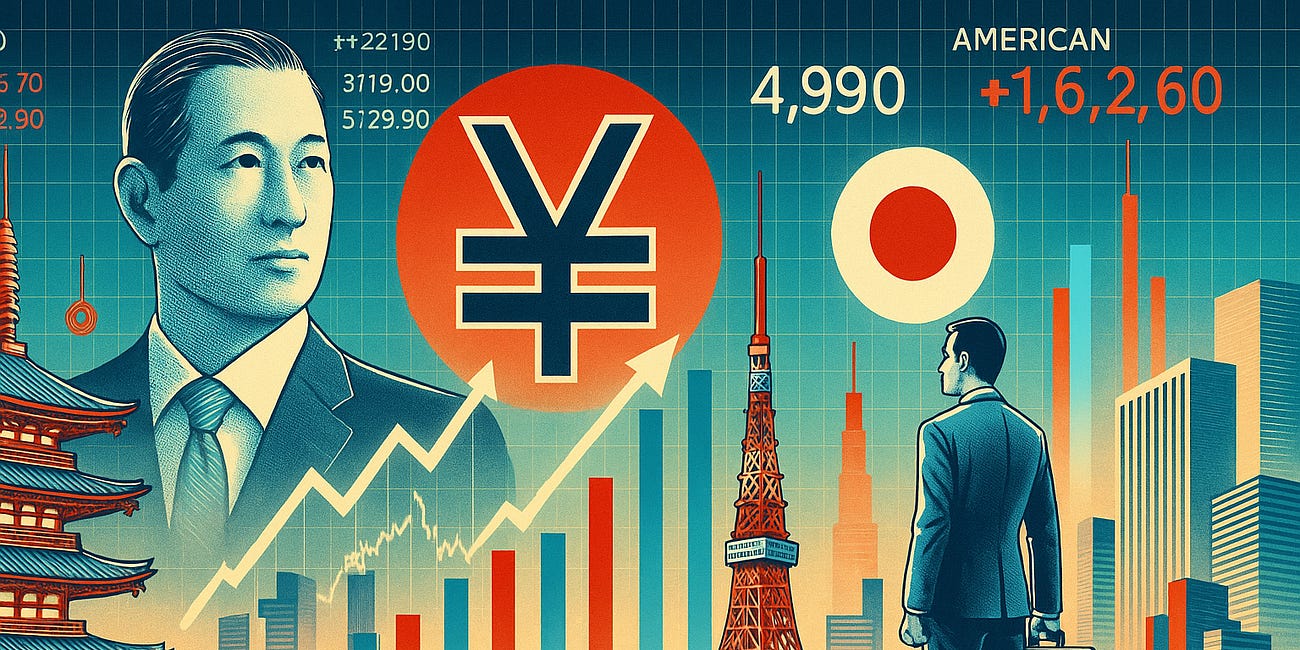Why the Tokyo Stock Exchange Stops for Lunch
A look at Japan’s unique trading hours and frequent holiday closures
If you’re used to U.S. or European markets, the Tokyo Stock Exchange (TSE) can feel like a world apart. Not only does it shut down for a full hour at lunchtime, it also observes more public holidays than most major exchanges. For international investors, especially in Europe, that means adjusting to a very different rhythm of trading.
Key Points
The TSE splits its day into two sessions: 9:00–11:30 AM and 12:30–3:00 PM (JST).
European investors face overnight trading hours, from 1:00/2:00 AM to 7:30/8:30 AM CET depending on daylight saving.
The exchange closes for 15–20 public holidays each year, more than most global markets.
Japan’s midday break and holiday calendar shape liquidity and trading strategies.
Split Sessions with a Midday Pause
Tokyo’s trading day is unique because it’s cut in half by a one-hour break:
Morning session: 9:00 AM – 11:30 AM (JST)
Afternoon session: 12:30 PM – 3:00 PM (JST)
When the morning session ends, the market doesn’t just slow down — it stops completely. Orders are paused, momentum resets, and traders literally break for lunch. This feature may seem old-fashioned, but it’s deeply ingrained in the way Japan’s markets operate.
The European Investor’s Challenge
For European investors, Tokyo’s trading hours unfold while most people are asleep:
Daylight saving time: 2:00 AM – 8:30 AM (CET)
Winter: 1:00 AM – 7:30 AM (CET)
Catching intraday moves means waking up early (or staying up late), only to face the midday pause that splits the flow in two.
Why Tokyo Still Breaks for Lunch
One of the quirks of the Tokyo Stock Exchange is the midday pause. From 11:30 AM to 12:30 PM, the market shuts down completely.
Originally, this break was practical. In the days before electronic trading, brokers and staff needed time to process orders and balance the books. Lunch was also part of the story: Japanese business culture has long valued a proper midday meal away from the desk.
Even though trading is now fully digital, the break remains in place. It serves several functions:
Operational reset: The exchange can check its systems and manage order flows.
Information pause: Investors get time to digest morning announcements and prepare for the afternoon session.
Cultural continuity: The lunch break reflects the rhythm of the Japanese workday.
For outsiders, it might seem odd that one of the world’s largest markets goes silent in the middle of the day. But in Tokyo, the pause is not a bug — it’s a feature.
A Calendar Full of Closures
On top of its unusual schedule, the TSE is also closed for a wide range of national holidays. In 2025, for example, the market shuts on:
January: 1 (New Year’s Day), 2 & 3 (Market Holidays), 13 (Coming of Age Day)
February: 11 (National Foundation Day), 23 (Emperor’s Birthday), 24 (observed)
March: 20 (Vernal Equinox)
April: 29 (Showa Day)
May: 3 (Constitution Memorial Day), 4 (Greenery Day), 5 (Children’s Day), 6 (observed)
July: 21 (Marine Day)
August: 11 (Mountain Day)
September: 15 (Respect for the Aged Day), 23 (Autumnal Equinox)
October: 13 (Sports Day)
November: 3 (Culture Day), 23 (Labor Thanksgiving Day), 24 (observed)
December: 31 (Market Holiday)
In total, Japanese markets close for 15–20 days annually, often creating gaps in global trading flows.
A Market with Its Own Rhythm
The Tokyo Stock Exchange doesn’t run on autopilot like some of its global peers. It follows a rhythm: morning, lunch, afternoon, holiday. For global investors, that means adjusting strategies to fit a schedule shaped as much by tradition as by efficiency.
Investing in Japan: Everything you need to know
Japan remains one of the most fascinating equity markets in the world. It is home to global household names in automobiles, consumer goods, and retail, but also to thousands of under-the-radar small caps and a fast-growing set of technology firms. For international investors, Japanese stocks offer a unique mix of tradition and modernization: unusual mar…
If you want to trade Japan, you don’t just need to watch the clock — you need to respect its pauses. And guess why we’re publishing this article today? The Japanese stock market was closed today on Monday, September 15, for Respect for the Aged Day.
At DividendJapan, we aim to highlight these opportunities and uncover hidden gems that may not yet be on your radar. Stay tuned as we explore Japan’s dividend growth stories and the next generation of market leaders!
Disclaimer: The information provided here is for informational purposes only and should not be considered financial advice. Investors should conduct their own research or consult with a financial advisor before making any investment decisions.





